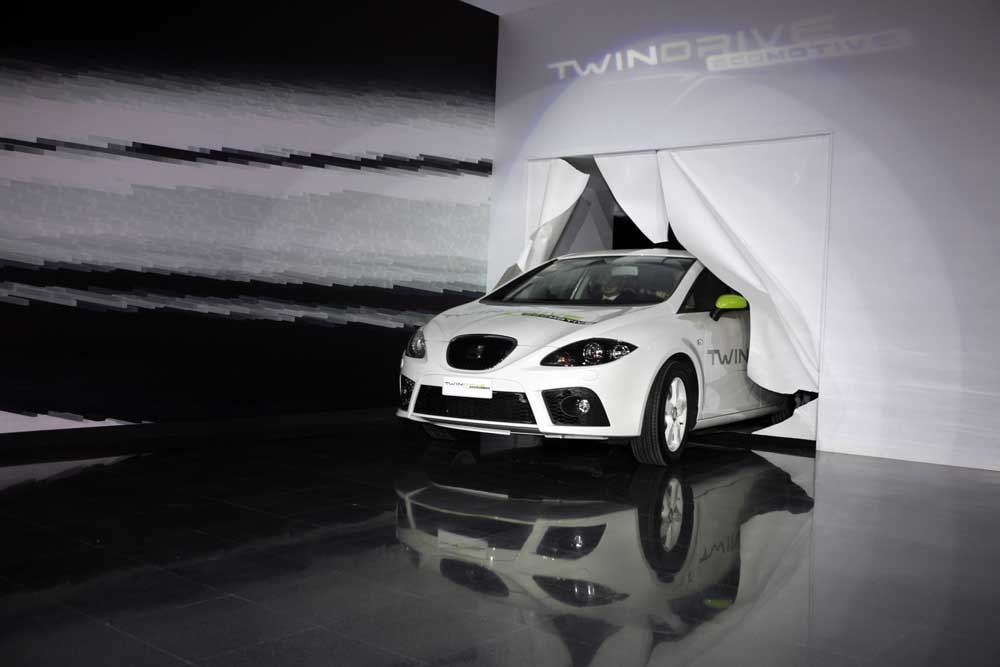SEAT today made another step towards a fully electric vehicle by presenting a hybrid prototype to the Spanish government that could reach the streets as soon as 2014. Just like any other hybrid, the Leon Twin Drive Ecomotive vehicle incorporates a regular combustion engine plus an electric unit which is entirely based on lithium-ion batteries. The combustion engine is obviously used for recharging the electric unit, while providing a very low fuel consumption combined with reduced gas emissions.
Francisco García Sanz, member of Volkswagen’s Executive committee and Chairman of SEAT’s Board of Directors, and Erich Schmitt, Chairman of SEAT, told Miguel Sebastián, Spanish minister for Industry, Tourism and Business, that developing such a vehicle type is pretty important during tough financial times, but support coming from electricity utility companies and Spanish officials is mandatory for such a car.
“Whereas half-way through the last century we made a decisive contribution to putting a whole generations on wheels, today, 50 years on, we also want to be leading players at the beginning of a process of development and industrialization of this type of car which combines an electric power unit with an internal combustion engine,” Garcia Sanz said.
“Product technology by itself is no guarantee for success. The implication of electricity utility companies as well as the clear support from governments is crucial in order to assure mobility and autonomy for the users”.
SEAT's electric prototype is actually a modified Leon, with the original combustion engine replaced by an electric unit. In addition, several parts, including transmission, heating and cooling systems and a number of electronic components, have also been removed or replaced by new and lighter ones. In full-electric mode, the lithium-ion battery back installed on the prototype provide a maximum power of 35 kW (47 hp), with the maximum speed rated at 100 km/h.
Francisco García Sanz, member of Volkswagen’s Executive committee and Chairman of SEAT’s Board of Directors, and Erich Schmitt, Chairman of SEAT, told Miguel Sebastián, Spanish minister for Industry, Tourism and Business, that developing such a vehicle type is pretty important during tough financial times, but support coming from electricity utility companies and Spanish officials is mandatory for such a car.
“Whereas half-way through the last century we made a decisive contribution to putting a whole generations on wheels, today, 50 years on, we also want to be leading players at the beginning of a process of development and industrialization of this type of car which combines an electric power unit with an internal combustion engine,” Garcia Sanz said.
“Product technology by itself is no guarantee for success. The implication of electricity utility companies as well as the clear support from governments is crucial in order to assure mobility and autonomy for the users”.
SEAT's electric prototype is actually a modified Leon, with the original combustion engine replaced by an electric unit. In addition, several parts, including transmission, heating and cooling systems and a number of electronic components, have also been removed or replaced by new and lighter ones. In full-electric mode, the lithium-ion battery back installed on the prototype provide a maximum power of 35 kW (47 hp), with the maximum speed rated at 100 km/h.









